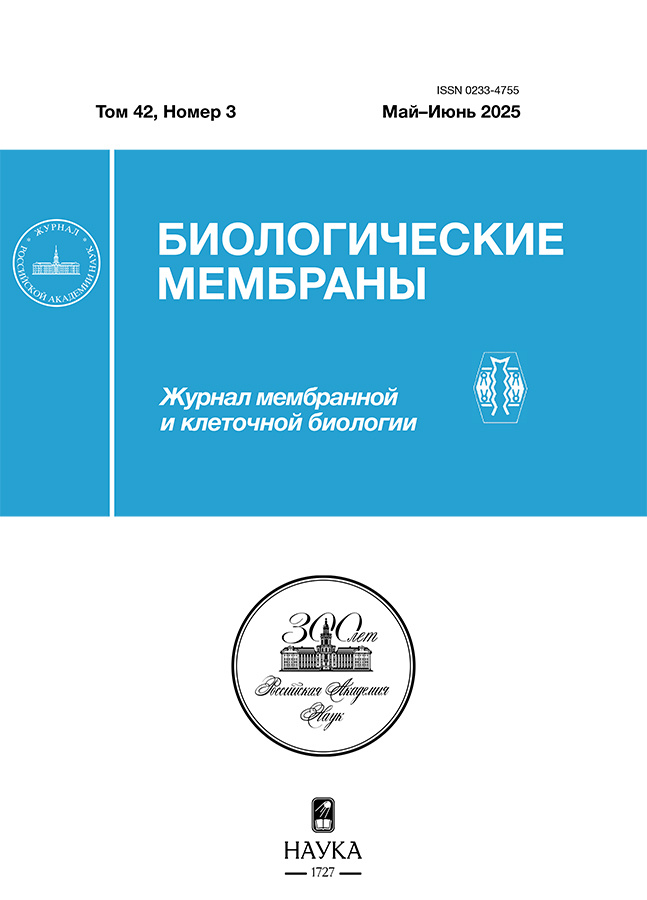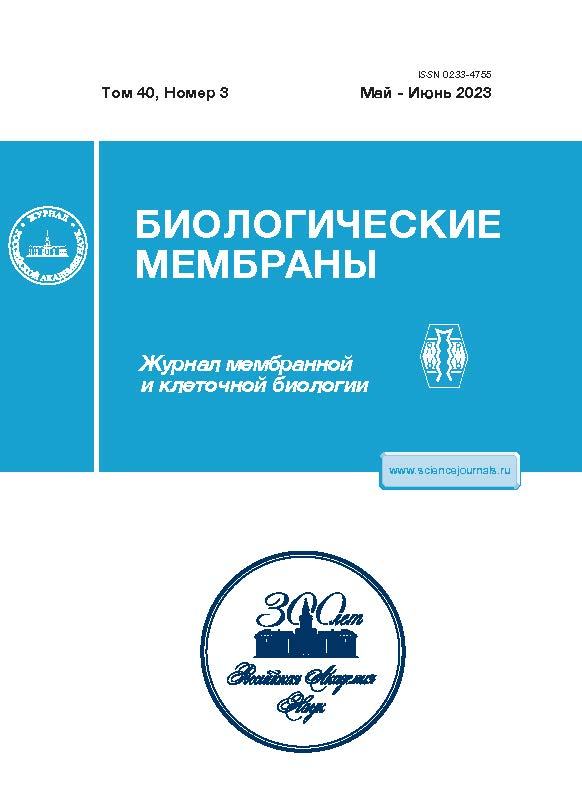Model of a Molecular Proton Sensor in Taste Cells
- Authors: Sladkov K.D.1, Kolesnikov S.S.1
-
Affiliations:
- Institute of Cell Biophysics, Russian Academy of Sciences, FRC PSCBR RAS
- Issue: Vol 40, No 3 (2023)
- Pages: 188-193
- Section: Articles
- URL: https://permmedjournal.ru/0233-4755/article/view/667357
- DOI: https://doi.org/10.31857/S023347552303009X
- EDN: https://elibrary.ru/EXKXJQ
- ID: 667357
Cite item
Abstract
Otopetrins represents a group of membrane proteins that function as proton-selective ion channels. Existing evidence indicates that Otop1, the eponym of the family, is a likely molecular sensor of protons involved in detecting acid stimuli in taste cells of type III. Acid stimuli is believed to initiate an inward current carried by protons through receptive apical membrane to depolarize a type III cell and trigger a train of action potentials driving afferent neurotransmission. While many details of this rather complicated process have not been uncovered yet, mathematical modelling could provide a sufficient insight into sour transduction. Here we present a mathematical model for describing dynamic and transport properties of Otop1 channel. The elaborated model appropriately describes proton currents through Otop1 under different conditions, and it could be employed for further modeling of sour responses of taste cells.
Keywords
About the authors
K. D. Sladkov
Institute of Cell Biophysics, Russian Academy of Sciences, FRC PSCBR RAS
Author for correspondence.
Email: klimitrich@ya.ru
Russia, 142290, Moscow oblast, Pushchino
S. S. Kolesnikov
Institute of Cell Biophysics, Russian Academy of Sciences, FRC PSCBR RAS
Email: klimitrich@ya.ru
Russia, 142290, Moscow oblast, Pushchino
References
- Roper S.D., Chaudhari N. 2017. Taste buds: Cells, signals and synapses. Nat. Rev. Neurosci. 18, 485–497.
- Taruno A., Nomura K., Kusakizako T., Ma Z., Nureki O., Foskett J.K. 2021. Taste transduction and channel synapses in taste buds. Pflügers Arch. – Eur. J. Physiol. 473, 3–13.
- Banik D.D., Benfey E.D., Martin L.E., Kay K.E., Loney G.C., Nelson A.R., Ahart Z.C., Kemp B.T., Kemp B.R., Torregrossa A., Medler K.F. 2020. A subset of broadly responsive Type III taste cells contribute to the detection of bitter, sweet and umami stimuli. PLoS Genet. 16, e1008925
- Huang A.L., Chen X., Hoon M.A., Chandrashekar J., Guo W., Trankner D., Ryba N.J., Zuker C.S. 2006. The cells and logic for mammalian sour taste detection. Nature. 442, 934–938.
- Lindemann B. 2001. Receptors and transduction in taste. Nature. 413, 219–225.
- Ishimaru Y. 2015. Molecular mechanisms underlying the reception and transmission of sour taste information. Biosci. Biotechnol. Biochem. 79, 171–176.
- Tu Y.H., Cooper A.J., Teng B., Chang R.B., Artiga D.J., Turner H.N., Mulhall E.M., Ye W., Smith A.D., Liman E.R. 2018. An evolutionarily conserved gene family encodes proton-selective ion channels. Science 359,1047–1050.
- Liman E.R., Kinnamon S.C. 2021. Sour taste: receptors, cells and circuits. Curr. Opin. Physiol. 20, 8–15.
- Chen Q., Zeng W., She J., Bai X.C., Jiang Y. 2019. Structural and functional characterization of an otopetrin family proton channel. Elife. 8, e46710.
- Saotome K., Teng B., Tsui C.C.A., Lee W.H., Tu Y.H., Kaplan J.P., Sansom M.S.P., Liman E.R., Ward A.B. 2019. Structures of the otopetrin proton channels Otop1 and Otop3. Nat. Struct. Mol. Biol. 26, 518–525.
- Li B., Wang Y., Castro A., Ng C., Wang Z., Chaudhry H., Agbaje Z., Ulloa G.A., Yu Y. 2022. The roles of two extracellular loops in proton sensing and permeation in human Otop1 proton channel. Commun. Biol. 5, 1110.
- Geng Y., Magleby K.L. 2015. Single-channel kinetics of BK (Slo1) channels. Front. Physiol. 5, 532.
- Cerella C., Diederich M., Ghibelli L. 2010. The dual role of calcium as messenger and stressor in cell damage, death, and survival. Int. J. Cell Biol. 2010, 546163.
- Shi H., Gu J. 2021. Calcium signaling mediates cell death and crosstalk with autophagy in kidney disease. Cells. 10, 3204.
- Budde T., Meuth S., Pape H.C. 2002. Calcium-dependent inactivation of neuronal calcium channels. Nat. Rev. Neurosci. 3, 873–883.
- Halling D.B., Aracena-Parks P., Hamilton S.L. 2005. Regulation of voltage-gated Ca2+ channels by calmodulin. Sci. STKE. 315, re15.
- Mullins F.M., Park C.Y., Dolmetsch R.E., Lewis R.S., Aldrich R.W. 2009. Stim1 and calmodulin interact with Orai1 to induce Ca2+-dependent inactivation of CRAC channels. Proc. Natl. Acad. Sci. USA. 106, 15495–15500.
- Parekh A.B. 2017. Regulation of CRAC channels by Ca2+-dependent inactivation. Cell Calcium. 63, 20–23.
- Limpitikul W.B., Greenstein J.L., Yue D.T., Dick I.E., Winslow R.L. 2018. A bilobal model of Ca2+-dependent inactivation to probe the physiology of L-type Ca2+ channels. J. Gen. Physiol. 150, 1688–1701.
- Bushman J.D., Ye W., Liman E.R. 2015. A proton current associated with sour taste: Distribution and functional properties. The FASEB J. 29, 3014–3026.
- Teng B., Wilson C.E., Tu Y.H., Joshi N.R., Kinnamon S.C., Liman E.R. 2019. Cellular and neural responses to sour stimuli require the proton channel Otop1. Current Biology, 29 (21), 3647–3656.
- Teng B., Kaplan J.P., Liang Z., Krieger Z., Tu Y.H., Burendei B., Ward A.B., Liman E.R. 2022. Structural motifs for subtype-specific pH-sensitive gating of vertebrate otopetrin proton channels. eLife 11, 77946.













